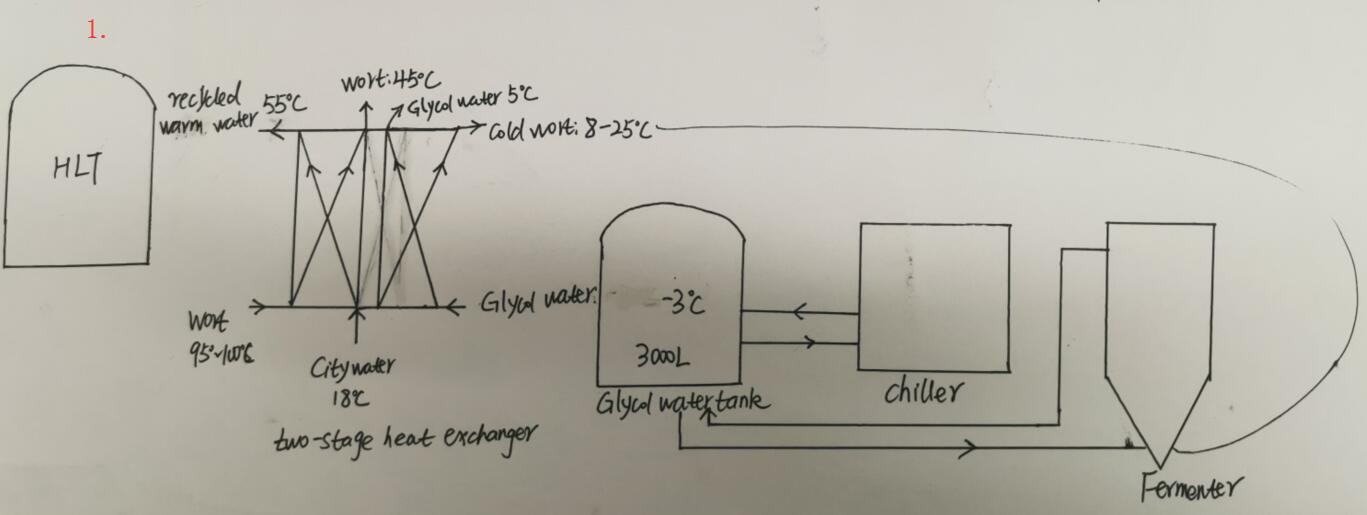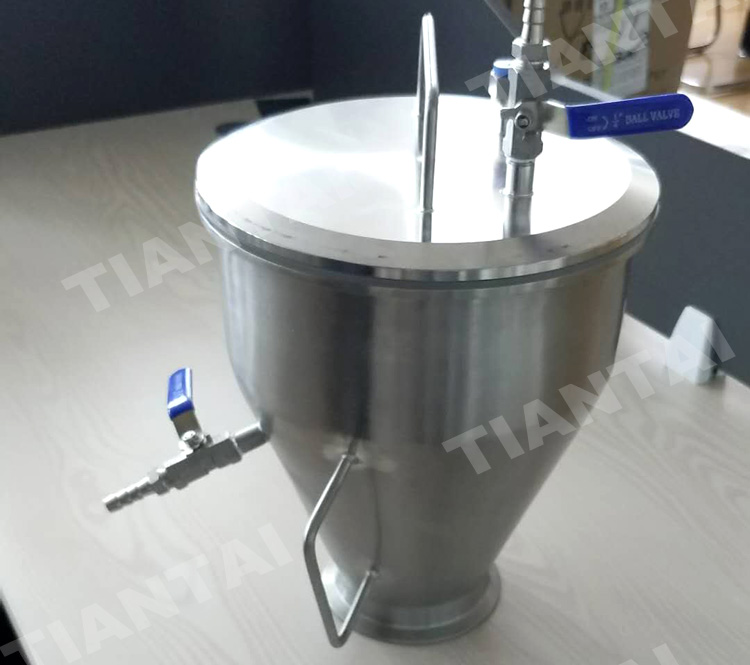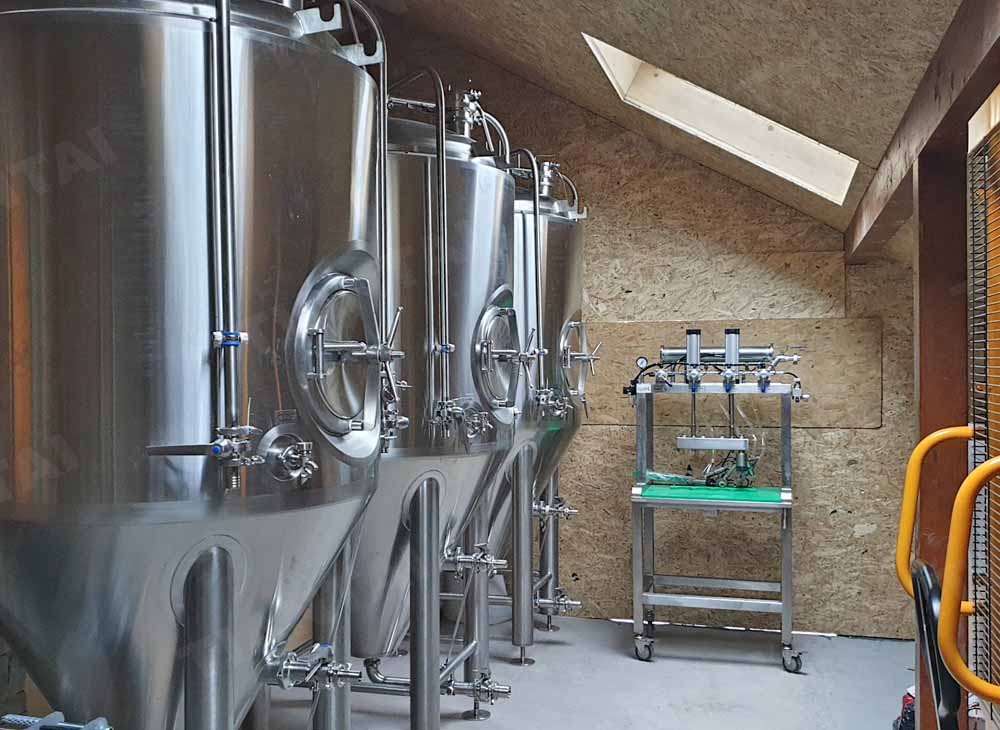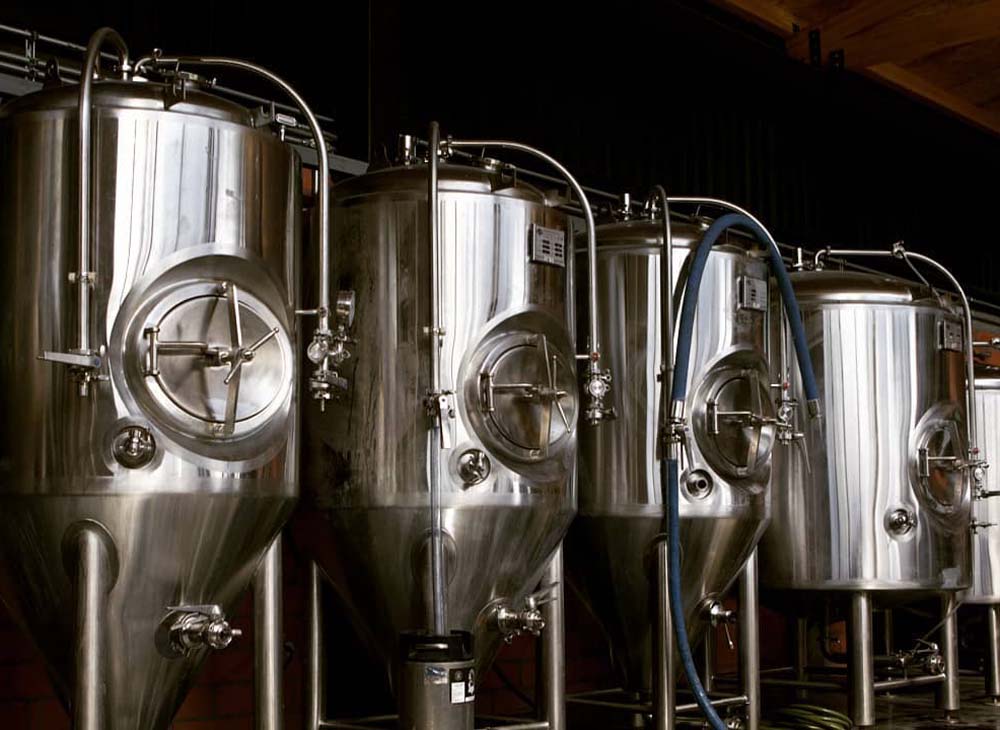Glycol cooling solutions for micro brewery
- Jul 18, 2019
- 168
- tiantai
Glycol cooling solutions for micro brewery
Here we take the 1000L/batch brewery as example:
As the picture showed below, we normally have two kinds of cooling systems to cool the wort and the fernentation.
Solution 1

This is more widely used in small breweries under 2000L. The cost is slightly lower.
As we can see from the principle, the 3000l glycol water tank will supply glycol to both fermentation tanks and the 2-stage heat exchanger. The 3000L glycol&water mixture (filled inside the glycol water tank, 30% glycol ratio) is normally kept at around -3 ℃- -5℃ by the chillers.
When the wort flow through the heat exchanger, at the first stage of the heat exchanger, the wort is cooled by the city water from around 95-100℃ to around 45℃. Then at the second stage of the heat exchanger, the wort is cooled again from around 45℃ to the fermentation temperature such as 15-25℃. This whole process will take around 30-40 minutes, as it is also effected by the city water temperature& flow at the first stage. The warmed city water can be recycled into the HLT, the recycled water temperature will be around 50℃.
If you want to recycle the water with higher temperature, then it comes two solutions:
A.Increase the heat exchanger capacity. So the water stays longer with the wort, so the outlet-water temperature is higher.
B.Use the single stage heat exchanger, so the wort is completely cooled by the city water, no glycol water attended. This change also related other changes, it is the solution 2:
Solution 2

Compared with solution 1, the differences are below:
1) An extra cold liquor tank is added.
2) So the wort is cooled by the extra cold liquor tank, the fermenters&brite tanks&Cold liquor tank are cooled by the chiller that contains an internal small glycol tank (or sometimes, cooled by an outside small glycol water tank if the chiller dose not have an internal glycol tank).
3) The heat exchanger is single stage, as the wort is only cooled by the cold water tank.
After heat exchanging, the cold water temperature will reach around 80-90℃, as the wort is completely cooled by the city water, no glycol water attended.
Advantage of Solution 2:
1) Higher heat exchanging efficiency. (The single stage heat exchanger has higher efficiency due to different lead-structure inside the heat exchange).
2) The cooling for wort and fermentation tanks won't clash, as they are cooled by different media.This is obvious when there are many fermentation tanks.
3) Once there is unknow leaking inside the heat exchanger, the wort will not be polluted by glycol, as it is also mixed with cold water.
Disadvantage of Solution 2:
1) Since one extra cold liquor tank is added, adding the budget.
2) More installation space is needed.
So for the second solution, if no special request, it is normally adopted for the bigger brewery such as 2000l.
Hope this bring you some reference. Welcome to contact us if any questions and comments.
Edited by Jana
Sales manager
[email protected]
Tiantai beer equipment company
Here we take the 1000L/batch brewery as example:
As the picture showed below, we normally have two kinds of cooling systems to cool the wort and the fernentation.
Solution 1

This is more widely used in small breweries under 2000L. The cost is slightly lower.
As we can see from the principle, the 3000l glycol water tank will supply glycol to both fermentation tanks and the 2-stage heat exchanger. The 3000L glycol&water mixture (filled inside the glycol water tank, 30% glycol ratio) is normally kept at around -3 ℃- -5℃ by the chillers.
When the wort flow through the heat exchanger, at the first stage of the heat exchanger, the wort is cooled by the city water from around 95-100℃ to around 45℃. Then at the second stage of the heat exchanger, the wort is cooled again from around 45℃ to the fermentation temperature such as 15-25℃. This whole process will take around 30-40 minutes, as it is also effected by the city water temperature& flow at the first stage. The warmed city water can be recycled into the HLT, the recycled water temperature will be around 50℃.
If you want to recycle the water with higher temperature, then it comes two solutions:
A.Increase the heat exchanger capacity. So the water stays longer with the wort, so the outlet-water temperature is higher.
B.Use the single stage heat exchanger, so the wort is completely cooled by the city water, no glycol water attended. This change also related other changes, it is the solution 2:
Solution 2

Compared with solution 1, the differences are below:
1) An extra cold liquor tank is added.
2) So the wort is cooled by the extra cold liquor tank, the fermenters&brite tanks&Cold liquor tank are cooled by the chiller that contains an internal small glycol tank (or sometimes, cooled by an outside small glycol water tank if the chiller dose not have an internal glycol tank).
3) The heat exchanger is single stage, as the wort is only cooled by the cold water tank.
After heat exchanging, the cold water temperature will reach around 80-90℃, as the wort is completely cooled by the city water, no glycol water attended.
Advantage of Solution 2:
1) Higher heat exchanging efficiency. (The single stage heat exchanger has higher efficiency due to different lead-structure inside the heat exchange).
2) The cooling for wort and fermentation tanks won't clash, as they are cooled by different media.This is obvious when there are many fermentation tanks.
3) Once there is unknow leaking inside the heat exchanger, the wort will not be polluted by glycol, as it is also mixed with cold water.
Disadvantage of Solution 2:
1) Since one extra cold liquor tank is added, adding the budget.
2) More installation space is needed.
So for the second solution, if no special request, it is normally adopted for the bigger brewery such as 2000l.
Hope this bring you some reference. Welcome to contact us if any questions and comments.
Edited by Jana
Sales manager
[email protected]
Tiantai beer equipment company




.jpg)